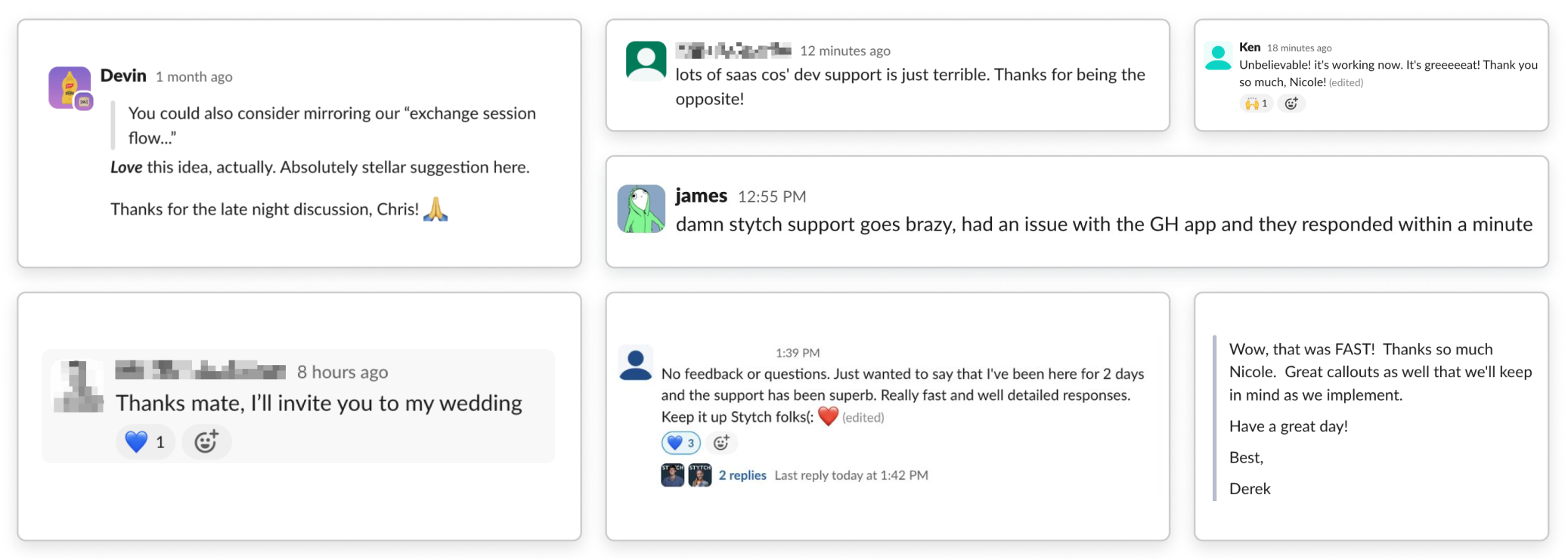The leading replacement for Cognito
Spend less time on auth and your AWS console
Easy to maintain authentication and security, maximum flexibility with your backend stack, and more hands-on support than AWS can provide.
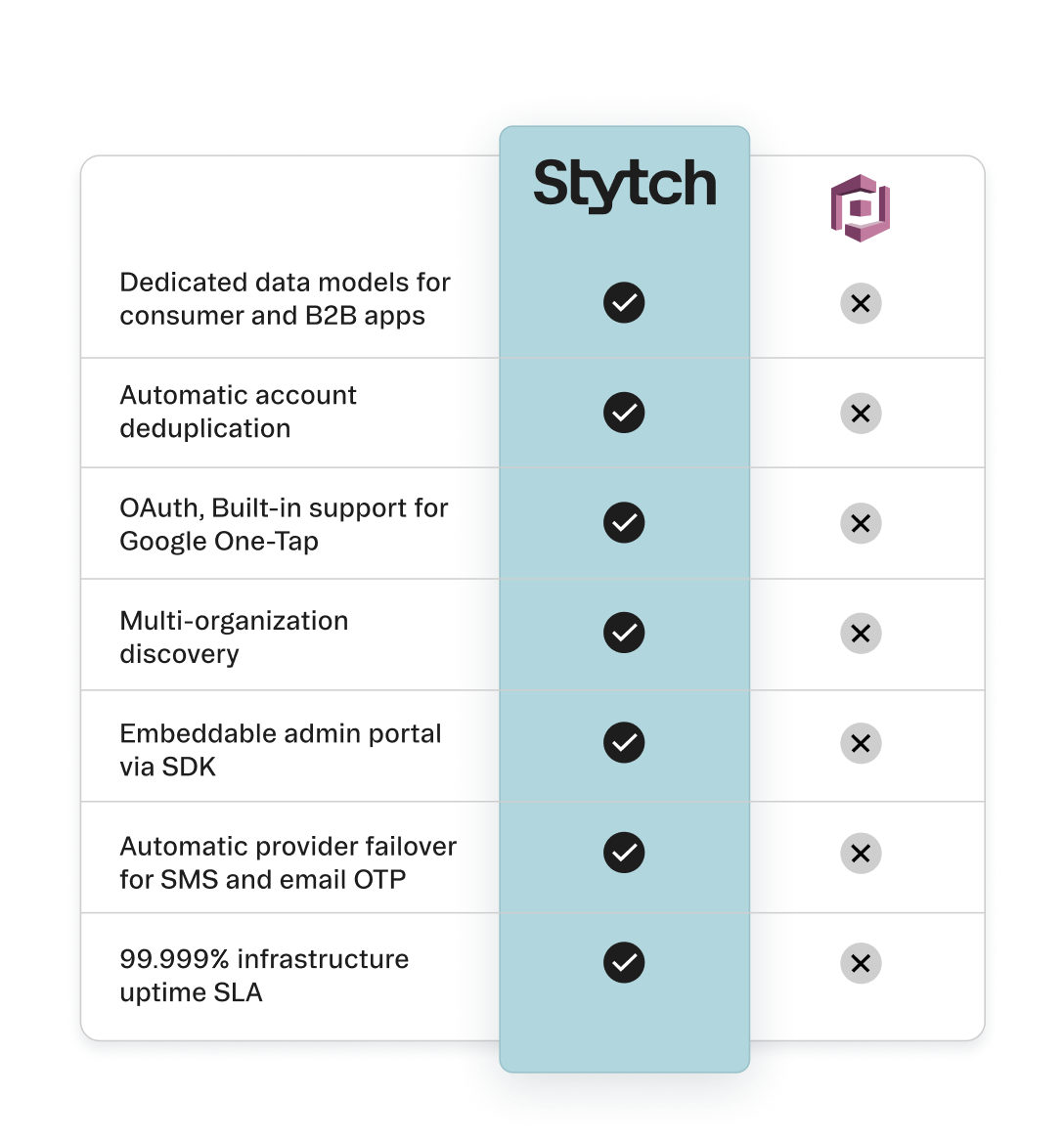
AuthN and AuthZ infrastructure with unparalleled flexibility
Auth how you want it, with pre-built UI, headless frontend SDKs, and backend APIs and SDKs
Simplify your codebase with tailored data models for consumer and B2B auth, freeing you from complex middleware
Scale with ease. MFA, SSO, RBAC, and SCIM—your entire auth roadmap, just an API call away
Manage users, organizations, and auth settings directly in your dashboard with an embeddable admin portal

Lower friction UX. Higher-converting signups
Faster OAuth integration
Stytch normalizes data models and nomenclature across providers, making OAuth easy and intuitive to integrate.
Account de-duplication
If a user signs up with their email address and later signs in via social login, Stytch automatically links and safely de-duplicates the accounts.
Simplified org discovery and login flow
With opt-in just-in-time provisioning by validated email domain, self serve organization creation and surfacing of pending invites.
Reduce the headache of managing your auth
Spend far less time on auth and security with powerful APIs and SDKs that handle all the complex corner cases and best practices so you aren’t stuck maintaining middleware and dealing with dozens of AWS modules and Lambdas.

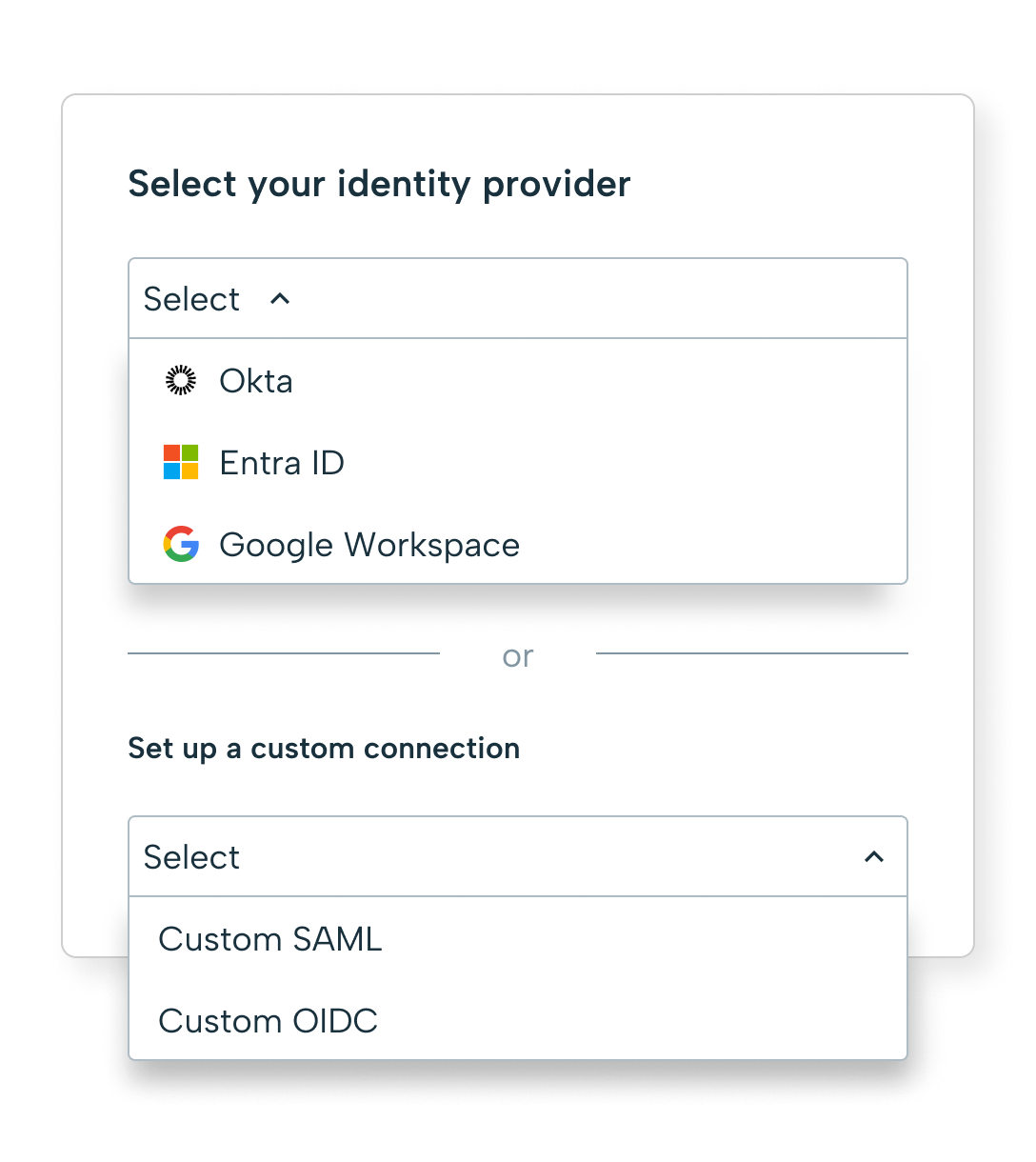
Free up engineering resources, let your customers self-serve config
Unlike Cognito, which requires the AWS console to make any changes, Stytch lets you natively embed an admin portal directly into your application. This interface empowers admins to configure and manage enterprise auth features like SSO within your platform.
Stytch's admin portal delivers a cohesive user experience and ensures security with RBAC-enforced permissions. No support tickets, no Lambda pools—just native AuthN/AuthZ features.
Leading fraud and abuse protection, built-in
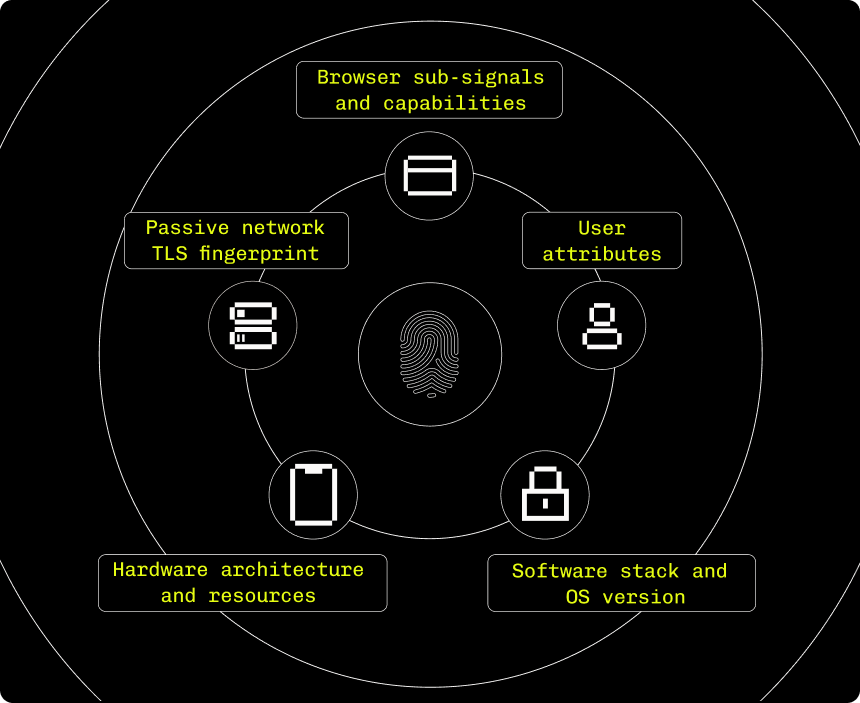
The world's most powerful fingerprint
Device intelligence built on a powerful combination of deterministic signals and supervised machine learning.
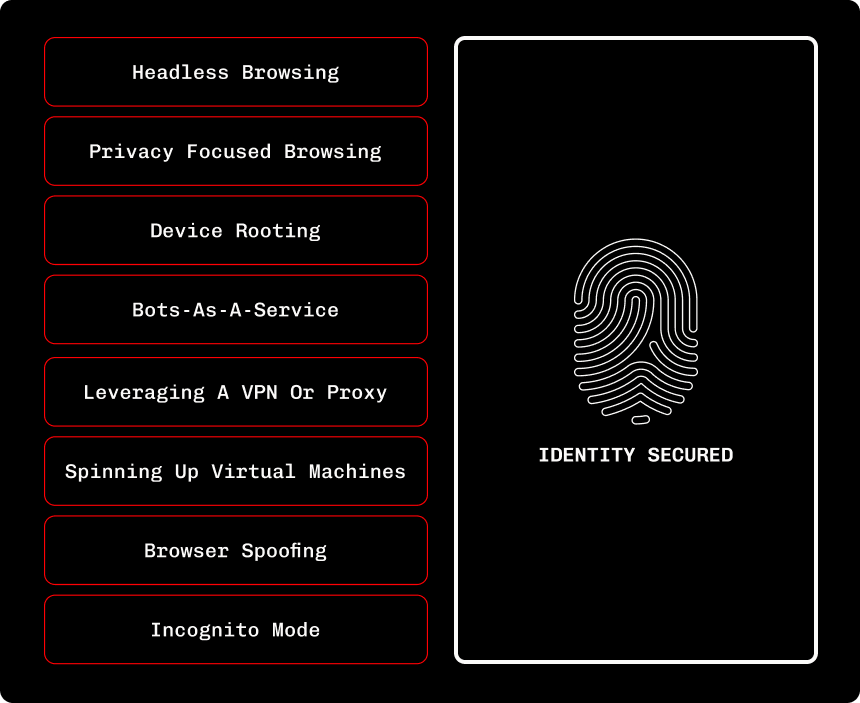
Hardened against the most sophisticated attackers
Immutable and resistant to evasion or reverse engineering, all while preserving user privacy.
What engineering teams are saying
With Cognito, we’d get so many user complaints that it would affect our ratings in the App Store. We’d also get about 200 direct messages a week reporting authentication errors that we’d have to deal with. Now, we’re not getting any at all.
With Cognito, we’d get so many user complaints that it would affect our ratings in the App Store. We’d also get about 200 direct messages a week reporting authentication errors that we’d have to deal with. Now, we’re not getting any at all.
Detailed feature comparison
Auth features | ||
|---|---|---|
Email/password login | ||
Email/password login | Supported | Supported |
Password reset flow | ||
Password reset flow | Supported | Supported |
Password breach detection | ||
Password breach detection | Supported | Only supported when not using SRP, requires Advanced Security Features |
One-Time Passcode (OTP) via SMS and Email | ||
One-Time Passcode (OTP) via SMS and Email | Supported | OTP via SMS only by default. Email must be done with a custom solution |
One-Time Passcode (OTP), built-in email & SMS with provider failover | ||
One-Time Passcode (OTP), built-in email & SMS with provider failover | Supported | Relies on Amazon SNS only. Custom senders must be configured manually |
Email magic link | ||
Email magic link | Supported | Custom solution required using Lambda functions and providers |
Embeddable magic links | ||
Embeddable magic links | Supported | Not supported |
Smart email magic links with passcode delivery protection | ||
Smart email magic links with passcode delivery protection | Supported | Not supported |
Social OAuth, support across major identity providers | ||
Social OAuth, support across major identity providers | Supports 18+ social identity providers | Only supports Facebook, Amazon, Google, and Apple |
Social OAuth, Built-in support for Google One-Tap | ||
Social OAuth, Built-in support for Google One-Tap | Supported | Not supported |
Native mobile biometrics | ||
Native mobile biometrics | Supported across iOS, Android, and React Native SDKs | Not supported |
WebAuthn | ||
WebAuthn | Supported | Supported |
Time-Based OTP (authenticator apps) | ||
Time-Based OTP (authenticator apps) | Supported | Supported |
OIDC & SAML SSO | ||
OIDC & SAML SSO | Supported | Supported |
Machine-to-Machine (M2M) | ||
Machine-to-Machine (M2M) | Supported | Supported |
Web3 Login | ||
Web3 Login | Ethereum & Solana login | Not supported |
Frontend UI | ||
Headless implementation | ||
Headless implementation | Supported | Supported |
UI whitelabeling | ||
UI whitelabeling | Supported | Redirect to Cognito or custom domain is required |
Full UI control and customization | ||
Full UI control and customization | API access for full customization | Limited without using User Pool API |
Embeddable admin portal via SDK | ||
Embeddable admin portal via SDK | Supported | Not supported |
Fraud and Risk Prevention | ||
Bot detection & prevention via Device Fingerprinting | ||
Bot detection & prevention via Device Fingerprinting | Via web & mobile SDKs | Basic implementation |
Strong CAPTCHA that enforces the identity of person solving | ||
Strong CAPTCHA that enforces the identity of person solving | Supported | Requires integrating 3rd party |
99.99% Bot detection accuracy | ||
99.99% Bot detection accuracy | Supported | No guarantees on accuracy |
<100ms Latency user evaluation | ||
<100ms Latency user evaluation | Supported | No guarantee on latency, often exceeding 100ms |
Intelligent rate limiting | ||
Intelligent rate limiting | Supported | "Quotas" must be handled manually |
Reverse engineering protection and preserves user privacy | ||
Reverse engineering protection and preserves user privacy | Supported | Not supported |
ML-powered device detection | ||
ML-powered device detection | Supported | Requires integration with Amazon Fraud Detector |
Ready to switch to Stytch?
We have a lot of migration experience – from Cognito, Firebase, Auth0, in-house, you name it – and we’re here to help make your switch to Stytch as seamless as possible.
